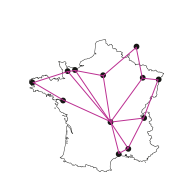
Coordination
Partners
Objectives
The purpose of the Actia Florepro joint technological network is to identify the brakes and roadblocks that limit the application of protective cultures for improving the microbiological quality of products from four food processing industries (meat, seafood, vegetables, and dairy products).
For this new accreditation period (2021-2025), the network has set objectives based on several observations:
- Strong societal demand for natural products.
- A need for manufacturers to grow sustainably.
- Recent scientific progress resulting from the accessibility of high-throughput DNA sequencing and genome tools.
- The need for operational measurement tools for detecting and tracing protective cultures, as well as evaluating their effectiveness, which would help to move forward regulations pertaining to biopreservation technology.
These different challenges have determined the priorities of Actia Florepro’s joint technological network, which proposes to evaluate biopreservation technology while taking into consideration the impact on the abiotic environment and upstream and downstream practices (specifically, the addition of biocontrol and biopreservation microorganisms) on interactions with microbial communities in food. This evaluation requires the development of tools and methods for the implantation of bioprotection microorganisms and for measuring their effectiveness, as well as for evaluating the technology’s practical, scientific, technical and economic advantages and disadvantages.
Actions
To achieve these objectives, the network will focus on three main areas of action and a fourth cross-cutting area:
Part 1: The acquisition of scientific knowledge at the scale of the microbial ecosystem: diversity, variability, dynamics, interactions, mechanisms and molecules of interest.
Part 2: The adaptation of measurement tools and methods for evaluating of the implantation and effectiveness of biopreservation agents.
Part 3: The evaluation of the environmental and economic impacts of biopreservation technology, its advantages, disadvantages, and the identification of points of caution.
Part 4: The promotion, communication, and publication of results and the creation of training resources.
This four-part work is a component of a national and European movement in partnership with other technological networks with expertise that complements that of the Actia Florepro network (environment, shelf-life, packaging, etc.).
RMT Actia Florepro et project ANR Redlosses - 12 october 2021






